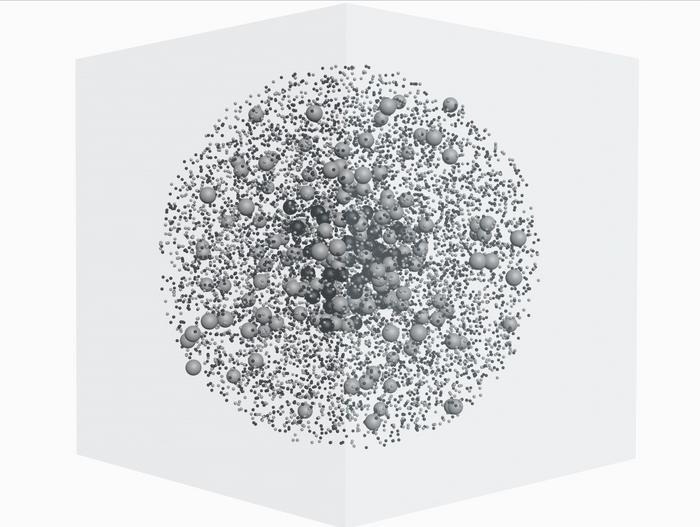A research group headed by Professor Junxian Wang from the University of Science and Technology of China (USTC) of the Chinese Academy of Sciences (CAS) discovered a bunched, multi-component eclipsing absorber in a study of X-Ray occultation events in the active galaxy named NGC 6814.

A schematic diagram of the marvelous absorber, composed of Compton-thin/Compton-thick clouds (larger grey/black spheres), and high/low ionized warm absorbers (smaller grey/black spheres). Image Credit: Image by Prof. Wang’s team
The study outcomes were reported in the journal Monthly Notices of the Royal Astronomical Society on August 23rd, 2023.
Active galactic nuclei possess powerful X-Ray emission sourcing in a small region next to the supermassive black hole, the alleged corona region.
When an absorbing cloud passes through the observer’s line of sight, the corona is concealed by the cloud, considerably impacting the noted X-Ray flux and spectral pattern, which is called an X-Ray occultation event.
The X-Ray occultation events bear a wealth of time-varying data, which is beneficial for analyzing the nature of the restricting coronal regions and also of the occulting cloud.
But such occultations are rare and erratic. Even if one is fortunate enough to capture such unusual occultations, their analytical interpretation still experiences a great challenge: active galactic nuclei have considerable intrinsic spectral changes.
Therefore, it is hard to strictly differentiate absorption changes from intrinsic spectral variations depending only on spectroscopic analyses.
For the issue to be resolved, the team initiated the “softer-when-brighter” variation pattern of active galactic nuclei into the analysis of occultation events, achieving extra separate constraints on spectroscopic analyses with the help of the hardness ratio (HR)–count rate (CR) plot.
The research group employed this method for a high-quality occultation event that has been captured by the XMM-Newton telescope in NGC 6814 and effectively disclosed a partially covering so-called “Compton-thick” absorption component in the eclipsing cloud.
Also, the research group discovered that the occultation absorber in NGC 6814 was clumpy and comprised several small clouds. Besides, the two thinner absorption layers that have been detected by the high-resolution spectra of the XMM RGS equipment might be debris stripped from the main occultation cloud, akin to the stardust nearby comets.
Hence, the research group was able to portray an exhaustive picture successfully of the complete marvelous eclipsing system: a clumpy, multiphase cluster of clouds. Also, the size of the corona is very small, nearly ten times the gravitational radius.
This work enhances the knowledge of the gas encircling supermassive black holes, stresses the significance of the HR-CR plot in analyzing occultation events, and offers a new method of searching for and explaining more occultation events.
Journal Reference
Kang, J-L., et al. (2023) What can be learnt from a highly informative X-Ray occultation event in NGC 6814? A marvellous absorber. Monthly Notices of the Royal Astronomical Society. doi.org/10.1093/mnras/stad2364.